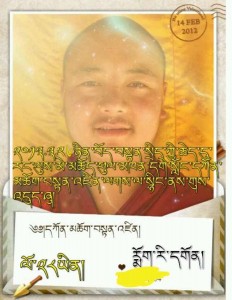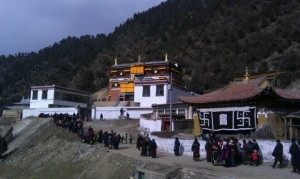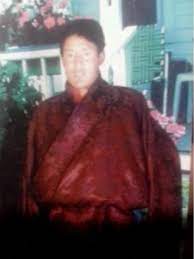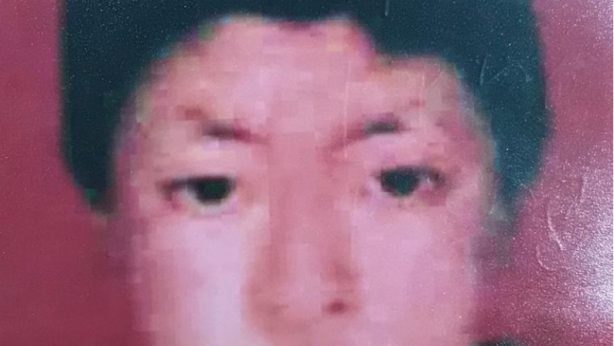Burning protests continue against Chinese repression in Tibet
A monk from Mogri Sampheling Monastery, commonly known as Mogri Monastery died of self-immolation protest in Mogri Village of Samtsa Township in Luchu (Ch: Luqu) County in Kanlho (Ch: Gannan) Tibetan Autonomous Prefecture, Gansu Province.
According to reliable information received by TCHRD, Konchok Tenzin, 28, a monk from Mogri Monastery set himself on fire at around 7 pm (local time) on 26 March near his monastery and died. The burning protest took place at the main intersection called Den Lungdo located on the main road leading to the monastery.
Minutes after the protest, his body was taken to the monastery by fellow monks. Fearing that the Chinese police might confiscate the body, monks held necessary prayer rituals and cremated the body at night.

The deceased, Konchok Tenzin, is the son of Lhakho and Lhamo Tsering. He was the youngest among his parents’ eight children. He became a monk at a young age at Mogri Monastery. After learning all the rituals and prayer ceremonies at the monastery, he has now begun learning the traditional fields of knowledge, including Buddhist philosophy.
Mogri Sampheling Monastery was founded in 1780 by Samtsa Sertri Jigme Namkha. The monastery instituted all the rituals and prayer ceremonies of Gutoe monastery. The head and the instructors of the monastery are being sent from Kirti Monastery. The current Samtsa Sertri is the eleventh reincarnation. At present, there are about 90 monks enrolled at the moanstery.

Following Konchok Tenzin’s self-immolation, Chinese security personnel have now been stationed near the monastery and in the village lo many security personnel have been stationed in the area particularly near the monastery and Tibetan residential areas.
Konchok Tenzin became the sixth Tibetan to self-immolate from Luchu County. All six did not survive self-immolation. With his self-immolation, the total number of self-immolation protests in Tibet since 2009 has reached 114.


